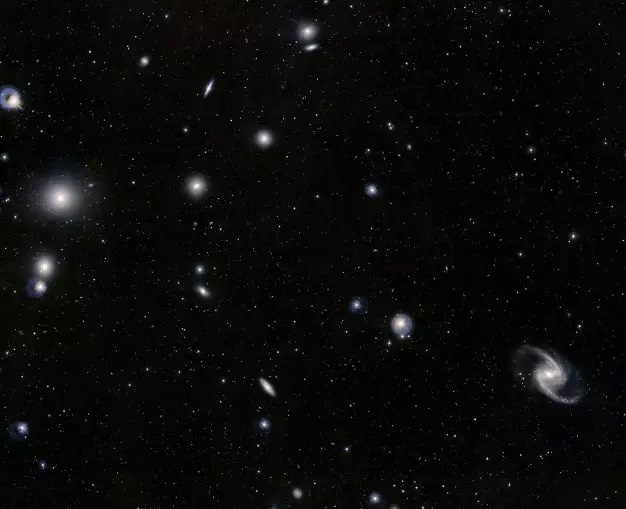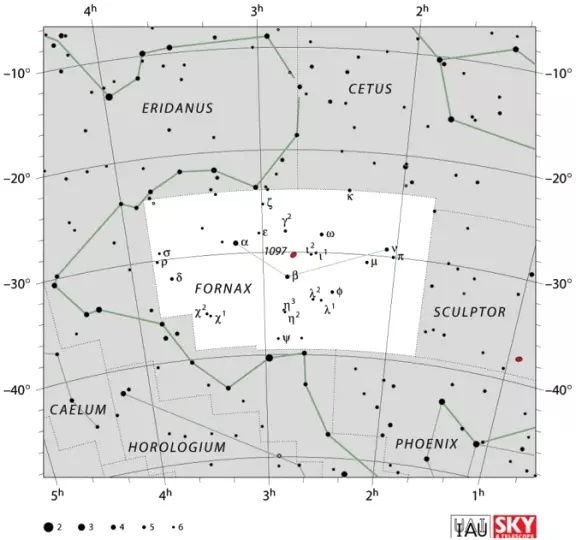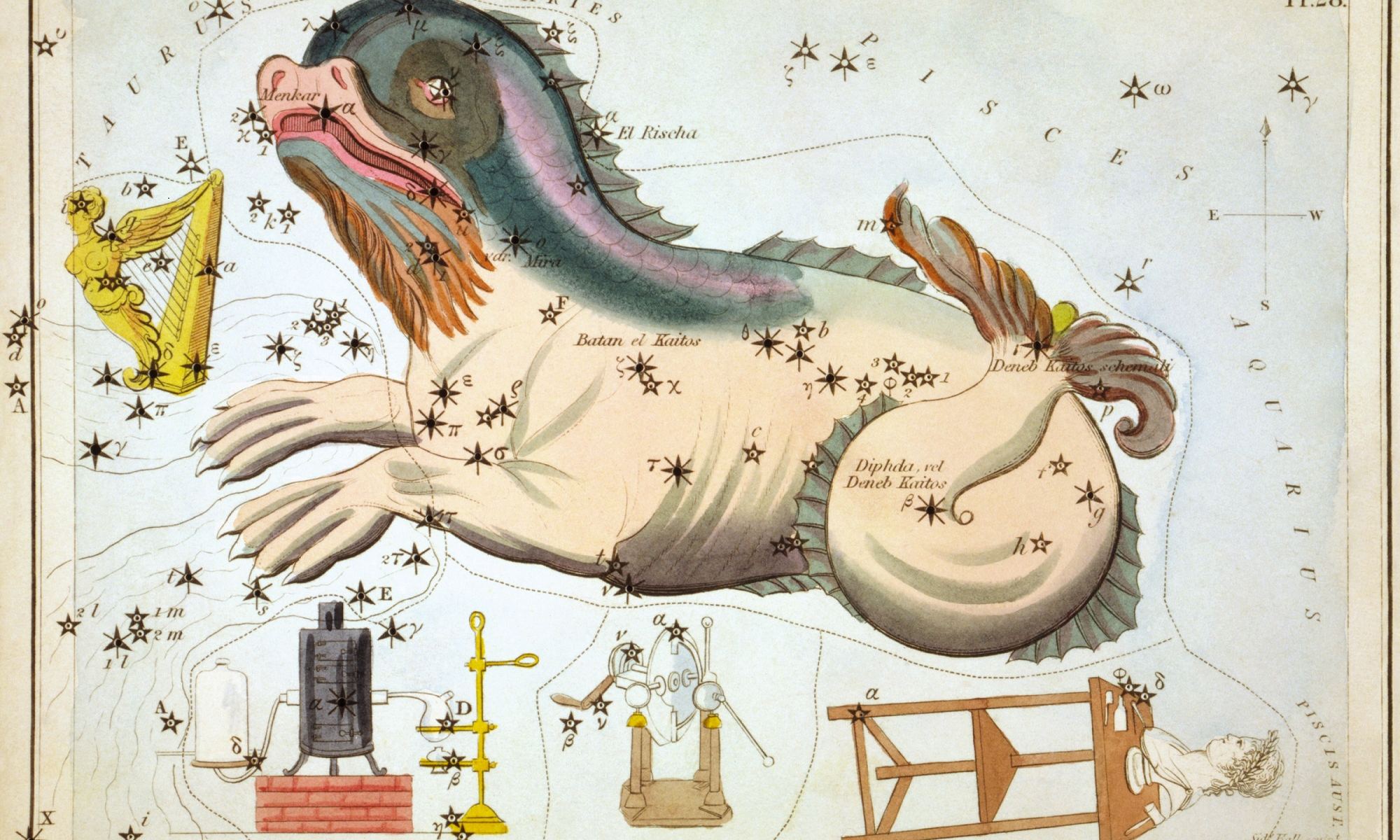Welcome to another edition of Constellation Friday! Today, in honor of the late and great Tammy Plotner, we take a look at “the Furnace” – the Fornax constellation. Enjoy!
In the 2nd century CE, Greek-Egyptian astronomer Claudius Ptolemaeus (aka. Ptolemy) compiled a list of the then-known 48 constellations. This treatise, known as the Almagest, would be used by medieval European and Islamic scholars for over a thousand years to come, effectively becoming astrological and astronomical canon until the early Modern Age. This list has since come to be expanded to include the 88 constellation that are recognized by the International Astronomical Union (IAU) today.
Among the updated list is the constellations Fornax, a relatively obscure constellation in the southern sky that is noted for the many bright galaxies it is associated with (the Fornax Cluster). This constellation was added French astronomer Nicolas Louis de Lacaille in the mid-18th century and is therefore part of the Lacaille family, which includes with Antlia, Caelum, Circinus, Horologium, Mensa, Microscopium, Norma, Octans, Pictor, Reticulum, Sculptor, and Telescopium.
Name and Meaning:
This constellation was one of fourteen devised by Lacaille in the mid-18th century, who named all but one of them after instruments that symbolised the Age of Enlightenment (17th and 18th centuries). The name is derived from the Latin word which means “the Furnace,” referring to the small solid-fuel heater formerly used for heating chemical experiments. Fornax is often referred to as the “Furnace” as well.
History of Observation:
The constellation of Fornax was first introduced by Nicolas Louis de Lacaille under the name Fornax Chemica. It was later abbreviated to its current name and adopted as one of the 88 modern constellations by the International Astronomical Union (IAU(. Ranking forty-first in terms of area, Fornax spans 398 square degrees of sky and consists of 2 main stars and 27 stars with Bayer/Flamsteed designations.
Since Fornax wasn’t readily visible to the ancient Greeks and Romans, there is no classical mythology associated with this constellation. There are no known mythological traditions from cultures in the southern hemisphere for this constellation either. In Roman mythology, Fornax was the goddess of bread and baking, although this has nothing to do with the constellation!
Notable Features:
Let’s begin our tour of Fornax hot spots with binoculars and take a look at Alpha Fornacis – the “a” shape on our map. Its proper name is Dalim, and it is also a very visual binary star. Located about 46 light-years from Earth, 4th magnitude Alpha Fornacis A is a subgiant star with a stellar luminosity that’s about four times brighter than our Sun, while the 7th magnitude B star is a G-class dwarf star that puts out only about half as much light as Sol.
Why such a great difference between the two? Mass is the answer. In this case, the stellar mass is directly proportionate to its output of luminosity. Now let’s move on to Beta Fornacis – the “B” shape on our map. Beta is a yellow giant star located about 170 light-years from our Solar System. Now hop west over to Delta Fornacis – the “8” shape on our map. This luminous blue variable star is located more than 700 light-years from Earth.

To observe another visual double star, drop south to see Eta 2 Fornacis, a pleasing pair when viewed with binoculars! How about some galaxies? Let’s start with NGC 1350 (RA 3:31.1 Dec -33:38) a spiral galaxy located 87.4 million light-years from Earth that is part of the Fornax Cluster. Measuring roughly 130,000 light-years across, this galaxy is slightly larger than the Milky Way and is populated by young blue star clusters. The spiral arms of NGC 1350 seem to wrap around the galaxy’s large, bright nucleus – giving it a lazy appearance.
It’s sometimes referred to as the “Colossal Cosmic Eye”. Then there’s NGC 1398 (RA 3:38.9 Dec -26:20), a barred spiral galaxy that is located 65 light-years away, is quite bright for a 10th magnitude galaxy, and shows a surprisingly bright nucleus even in a smaller telescope. Believe it or not, it was originally found by Friedrick Weinnecke when he was searching for comets with a 4.5″ reflector! Don’t mistake the core for all of the galaxy. Use aversion to look for the full spiral structure of this beauty.
Turn your sights towards NGC 1097 (RA 2:46.3 Dec -30:17), a barred spiral galaxy located about 45 million light-years. This is one hot Seyfert galaxy, with jets shooting from the core that is the result of a supermassive black hole at its center. Around the central black hole is a ring of star-forming regions with a network of gas and dust that spirals from the ring to the black hole.
NGC 1097 has two satellite galaxies: NGC 1097A and NGC 1097B. A is the largest of the two, a peculiar elliptical galaxy that orbits 42,000 light-years from the center of NGC 1097. B is the outermost satellite and not much is known about it. Want some more? How about NGC 1316 (RA 3:22.7 Dec -37:12), an even brighter lenticular galaxy located about 70 million light-years away.

Are you a fan of radio? Then turn it up because NGC 1316 (aka. Fornax A) is a brilliant radio source! Francois Schweizer studied NGC 1316 extensively in the late 1970s and noted that it looked like a small elliptical galaxy with some unusual dust lanes embedded within a much larger envelope of stars. The outer envelope contained many ripples, loops, and arcs. He also identified a compact disk of gas near the center that appeared inclined relative to the stars and appeared to rotate faster than the stars.
Based on these results, Schweizer suggested that NGC 1316 was formed from the merger of several smaller galaxies. These merger events may have fueled the central supermassive black hole with gas, causing the galaxy to become a radio galaxy. He also stated that NGC 1316 is comparable to the giant elliptical galaxies found in the centers of other galaxy clusters. Based on spectra obtained from its brightest globular clusters, the latest merger is estimated to have occurred over three hundred thousand years ago.
Before we leave the Furnace, let’s have a look at NGC 1360 (RA 3:33.3 Dec -25:51). Here we have one very bright planetary nebula! No one was sure what it was until Rudolph Minkowski positively identified it. So what’s going on in this peculiar creature? Try a Wolf-Rayet star violently ejecting matter into a surrounding shell! Because larger telescopes sometimes reveal more color, you’ll soon understand how this one got its nickname – the “Robin’s Egg Nebula”!
Finding Fornax:
Fornax is visible to all observers located between latitudes between +50° and -90° and is best seen at culmination during the month of December. It is bordered by the constellations of Cetus, Sculptor, Phoenix, and Eridanus. The constellation of Fornax contains a huge amount of galaxies, so please don’t stop here. Get yourself a good star atlas and let the “Furnace” heat up your observing nights!
For galaxy hunters, Fornax is an absolute delight. It’s time to get out the telescope!
We have written many interesting articles about the constellation here at Universe Today. Here is What Are The Constellations?, What Is The Zodiac?, and Zodiac Signs And Their Dates.
Be sure to check out The Messier Catalog while you’re at it!
For more information, check out the IAUs list of Constellations and the Students for the Exploration and Development of Space page on Canes Venatici and Constellation Families.
Sources:

